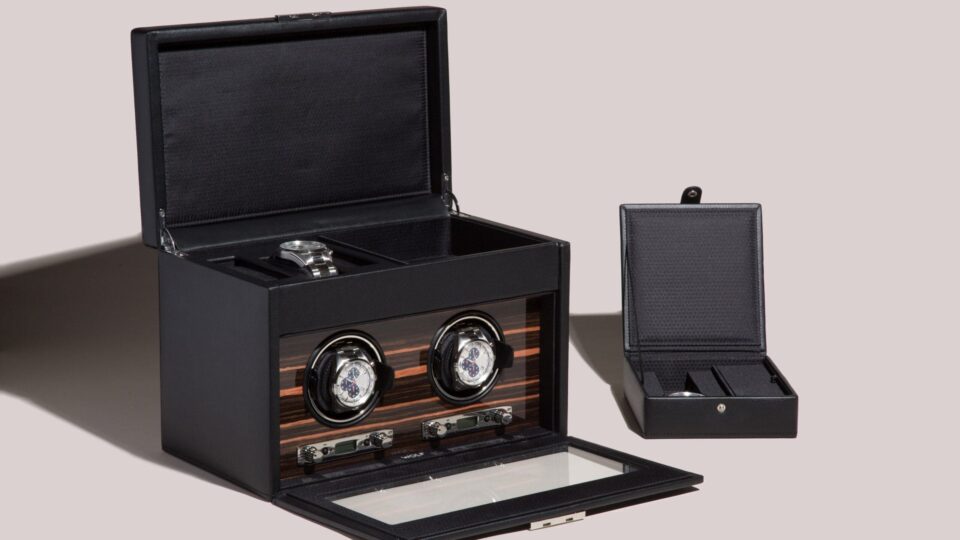The job of a watch winder is to, as best possible replicate what happens when worn on your wrist. Extending the thought process, an automatic watch in a watch winder must therefore not be turning all the time. It must also be turned in different directions, and most crucially it should have periods of rest where it is not moving at all.

In my previous business, I owned a chain of watch repair shops. In our main workshop where automatic watches were serviced, the watchmakers would use watch winders to put power into the mainspring in order to test their performance post service and overhaul. Automatic watches run time and timekeeping were adjusted depending on the findings after being tested on a watch winder.
‘An automatic watch winder is a good thing to have and use’, the watchmakers would tell me. ‘Not only does it keep a watch running when not being worn, but a watch winder also ensures the oils in the movement are being circulated. This prevents wear and tear and can delay a service interval too.’
So how many TPD or tuns per day do automatic watches require? The answer is not a complicated as one may imagine it to be. It is also not a precise science because, like the humans that wear these timepieces, their own activity varies greatly. Saying that however, much research has been carried out, and there are excellent guidelines to follow before choosing your watch winding box.
I will cover different brand and model requirements in further articles but will start with a guide to our recommended TPD’s (turns per day) for the biggest brand in the world right now which is of course ROLEX.
Luxury Watch Winders recommends a watch winder for a ROLEX that will give 650 turns per day, bi-directionally and with periods of rest. This recommendation is suitable for all Rolex automatic watches with the exception of the Sea Dweller Collection, which requires 800 TPD.
